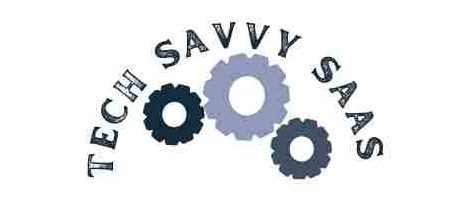As we propel further into the 21st century, the growing importance of sustainability has become a paramount concern across various industries. In the realm of technology, where innovation is incessant, the focus on sustainability has intensified. This introduction sheds light on the escalating significance of sustainable practices, specifically within the intricate landscape of software development.
Software development, a cornerstone of technological advancement, is not exempt from the broader concerns of environmental sustainability. The very act of coding and creating digital solutions has tangible consequences for the environment. The purpose here is to illuminate the profound environmental impact of software development, from the lines of code to the deployment of complex systems.
In the face of these challenges, a compelling need arises for a paradigm shift towards more sustainable practices in software development. This introduction sets the stage for a comprehensive exploration of how the technology industry, especially the domain of software development, can navigate toward a future where innovation coexists harmoniously with environmental responsibility.

The environmental impact
In the intricate dance between software and sustainability, it’s imperative to delve into the profound implications of environmental impact. This section dissects the intricate relationship, bringing into focus key aspects that define this intersection.
Energy consumption stands as a pivotal factor in the environmental equation of software development. The very act of creating and running software requires substantial energy resources. From the servers powering cloud platforms to the energy-intensive processes of coding and testing, every keystroke contributes to the overall consumption. Unraveling the nuances of energy utilization is crucial to understanding the environmental consequences of our digital innovations.
Analyzing the Carbon Footprint of Coding Practices
The carbon footprint associated with coding practices reveals the ecological repercussions of every line of code. This entails not only the immediate energy consumption during development but also the long-term environmental impact of the software’s lifecycle. From deployment to end-of-life considerations, each decision made in the coding realm echoes the carbon emissions that persist in our atmosphere. A meticulous analysis of these footprints is paramount to crafting a more sustainable approach.
Discussing the Role of Technology Companies in Environmental Issues
Beyond individual coding practices, the collective responsibility of technology companies comes to the forefront. This subsection examines how the actions and policies of tech giants and startups alike contribute to broader environmental issues. From data center management to corporate sustainability initiatives, the role of these entities becomes pivotal in shaping the environmental narrative of the technology sector. An open discourse on their contributions, positive or negative, lays the foundation for informed decision-making and industry-wide change.
Key Factors Influencing Sustainability
In the pursuit of creating a more sustainable future within the realm of software development, it’s essential to identify and comprehend the key factors influencing sustainability. This section elucidates pivotal elements that wield significant influence in shaping a more environmentally conscious approach to software engineering.
Impact of Software Design and Architecture on Sustainability
The software design and architecture of a system wield unparalleled influence over its environmental footprint. Efficient and thoughtful design choices can drastically minimize resource consumption and waste. This subsection delves into the principles of sustainable software design, exploring how architectural decisions can either amplify or mitigate the environmental impact of software products. From modular structures to optimized algorithms, every design choice carries the potential to shape a more sustainable future.
The Significance of an Energy-Efficient Code in Reducing Consumption
At the core of sustainable coding practices lies the recognition of the significance of energy-efficient code. Coding is not merely about functionality; it is also about resource utilization. This part of the discussion emphasizes how writing code with energy efficiency in mind can lead to substantial reductions in overall resource consumption. From algorithmic optimizations to streamlined processes, developers hold the power to influence energy consumption through their coding choices.
Exploring the Environmental Implications of Cloud Services and Data Centers
As the digital landscape shifts towards cloud-centric solutions, it becomes imperative to scrutinize the environmental implications of cloud services and data centers. The centralized nature of cloud computing introduces both opportunities and challenges in terms of sustainability. This segment investigates how data storage, processing, and retrieval in the cloud impact the environment. From server farms to data transmission, understanding the ecological consequences of cloud-based solutions is essential for making informed decisions in pursuit of a greener software industry.
Code, Hardware, and Power Efficiency
Within the framework of sustainable software development, achieving code, hardware, and power efficiency stands as a critical objective. This section delineates key strategies and considerations for fostering a more resource-conscious approach in these interconnected facets.
Optimizing Code for Energy Efficiency
Optimizing code for energy efficiency is a fundamental pillar of sustainable software development. This involves a meticulous examination of the codebase to identify and rectify areas that contribute to excessive energy consumption. From algorithmic improvements to minimizing computational redundancies, every optimization decision carries the potential to reduce the environmental impact of software. This subsection delves into practical techniques and best practices for crafting code that not only meets functional requirements but does so with minimal energy expenditure.
Sustainable Hardware Choices for Development Teams
Development teams wield significant influence over the environmental impact of their projects, especially through sustainable hardware choices. This involves a strategic selection of hardware components, considering factors such as energy efficiency, recyclability, and longevity. From workstations to server infrastructure, every hardware decision contributes to the overall sustainability of the development process. This part of the discussion explores the criteria for selecting eco-friendly hardware and the potential impact of such choices on the broader industry.
Strategies for Reducing Power Consumption in Software Products
The environmental impact of software extends beyond the development phase to the operational lifecycle of software products. This subsection focuses on strategies for reducing power consumption during the deployment and usage of software applications. From runtime optimizations to energy-aware configurations, developers and system administrators play a pivotal role in ensuring that software products operate efficiently without unnecessary energy expenditures. A detailed exploration of these strategies provides actionable insights for creating and maintaining software that aligns with the principles of sustainability.
Sustainable Practices for Development Teams
Development teams play a pivotal role in shaping the environmental impact of software development. Embracing sustainable practices within the development process is not only an ethical choice but also a strategic one for creating a long-lasting and eco-friendly impact. This section explores various dimensions of sustainable practices for development teams, encompassing the software development life cycle, team collaboration, and education.
Sustainable Software Development Life Cycle
To foster a truly sustainable approach, it’s imperative to integrate sustainability into the software development life cycle. This involves aligning every phase of the development process with eco-friendly principles. From ideation to deployment and beyond, considering the environmental impact becomes a core component of decision-making. This subsection elucidates strategies for weaving sustainability into the fabric of software development, ensuring that every stage contributes to a greener and more responsible outcome.
Sustainable Decision-Making During Requirements Gathering and Design Phases
The early stages of software development, particularly requirements gathering and design phases, present unique opportunities for sustainable decision-making. This involves not only defining functional requirements but also assessing the environmental implications of various design choices. From selecting technologies with lower energy footprints to anticipating future scalability, this part of the discussion explores how sustainable decisions made in the nascent stages reverberate throughout the entire life cycle.
Strategies for Green Project Management
At the core of sustainable software development lies green project management. This encompasses not only scheduling and resource allocation but also considering the ecological consequences of project decisions. From prioritizing sustainable features to optimizing development workflows, adopting green project management practices can significantly reduce the overall environmental impact. This subsection provides insights into practical strategies for project managers and team leads to steer projects towards a more sustainable future.
Fostering a Culture of Sustainability Among Development Teams
Creating a sustainable software development culture goes beyond individual actions; it requires fostering a culture of sustainability among development teams. This involves instilling environmental consciousness in team dynamics, emphasizing the collective responsibility of every team member. From daily practices to project goals, cultivating a shared commitment to sustainability ensures that the entire team actively contributes to reducing the environmental footprint of software development.
Training Developers on Eco-Friendly Coding Practices
The heart of sustainable software development lies in the hands of developers. Training developers on eco-friendly coding practices is a crucial step towards ingraining sustainable principles into the coding ethos. This involves not only raising awareness about the environmental impact of coding decisions but also providing practical guidance on writing code that minimizes resource consumption. From workshops to ongoing education initiatives, empowering developers with the knowledge and tools for sustainable coding is essential for lasting change.
The Role of Leadership in Promoting Sustainable Principles
Leadership within development teams holds the power to amplify the impact of sustainable practices. This subsection explores the role of leadership in promoting sustainable principles. From setting the tone for eco-conscious decision-making to integrating sustainability into team objectives, effective leadership becomes a driving force for positive change. Insights into how leaders can champion sustainability within development teams lay the groundwork for a collective and impactful approach toward creating a greener software industry.
Key Takeaways
- As we wrap up our exploration of sustainable software development, it’s essential to distill the crucial insights that underscore the significance of integrating environmental responsibility into the fabric of the software industry. These key takeaways serve as a compass, guiding developers, companies, and decision-makers toward a future where innovation aligns seamlessly with sustainable principles.
- In summary, sustainable software development is not merely an aspiration but a necessity in the contemporary technological landscape. The critical points underscore the imperative to minimize the environmental impact of coding, design, and deployment processes. From optimizing code for energy efficiency to making sustainable hardware choices, every decision matters. The software industry must recognize the interconnectedness of its actions with the broader ecosystem and strive for solutions that are both innovative and environmentally responsible.
- Central to the journey towards sustainability is the acknowledgment of the collective responsibility of developers and companies. While individual developers play a crucial role in optimizing code and making eco-friendly decisions, the onus extends to technology companies as well. Corporate policies, data center management, and overall sustainability initiatives contribute significantly to the industry’s environmental impact. This emphasizes the need for collaboration between developers and companies to collectively reduce the carbon footprint of software development.
- The path to a sustainable future for software development is paved with the adoption of green practices. Beyond meeting functional requirements, developers and companies must prioritize eco-conscious decisions. This involves continuous learning, staying updated on energy-efficient coding practices, and embracing technologies that align with environmental sustainability. By encouraging the adoption of green practices, the software industry can take substantial strides towards creating a positive impact on the planet.
FAQ
Why is sustainable software development important?
Sustainable software development is crucial for mitigating the environmental impact of the technology industry. It helps reduce energy consumption, minimize carbon footprints, and contribute to the global effort to combat climate change.
How can software design influence sustainability?
Software design plays a pivotal role in sustainability by optimizing code for energy efficiency, making eco-friendly architectural decisions, and considering the environmental impact of the entire software life cycle.
What role do developers play in sustainable practices?
Developers have a significant role in adopting energy-efficient coding practices, making sustainable design decisions, and contributing to a culture of environmental responsibility within development teams.
Tips for Energy-Efficient Coding
Explore practical tips for energy-efficient coding practices, including optimizing algorithms, minimizing resource-intensive processes, and adopting coding standards that prioritize sustainability.
Green Team Initiatives
Encourage team-wide initiatives that promote sustainability, such as establishing green coding challenges, organizing eco-conscious hackathons, and recognizing and rewarding sustainable practices within the team.
Conclusion
In conclusion, the journey towards a more sustainable future in software development is both an individual and collective responsibility. By prioritizing environmental responsibility, developers, companies, and decision-makers can contribute to a positive and lasting impact on the planet.
The importance of sustainable practices in software development cannot be overstated. Beyond addressing current environmental concerns, it shapes the industry’s future trajectory. This subsection reaffirms the significance of integrating sustainability into every facet of software development.
The call to action extends to every stakeholder in the software industry. Developers, companies, and decision-makers alike are urged to prioritize environmental responsibility in their strategies, policies, and daily practices. This collective effort is essential for effecting meaningful change.
The integration of sustainability into the software industry is not just a short-term trend; it’s an investment in a better, more resilient future. This subsection highlights the long-term benefits, both environmental and economic, that come from embracing and championing sustainable practices in software development. It’s a journey with rewards that extend far beyond the immediate horizon, shaping a future where technology and sustainability harmonize for the greater good.
More Post






